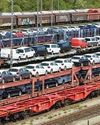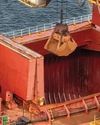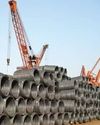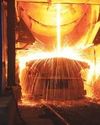
India has firmly placed itself in the second position among world’s leading steel manufacturers.
Yet, it consumes just 74 kilograms of steel per head as per 2019 Worldsteel data, hovering at the bottom rung of the ladder with global average of 224.5 kgs.
China consumes 633 kgs. Japan, whom India displaced from the second position in the producers’ list, uses 498 kgs a year. Austria with 444.5 kgs, ranks first.
The prosperity and progress of a nation, with steel as a justifiable barometer, can be gauged not with the volume of a material that the country churns out but the amount each of its citizen consumes.
On that parameter, India needs some urgent catching up to do.
One of the first things that the Central government did after recovering from the initial blow of the pandemic was to focus on how to raise steel consumption in our country.
A series of virtual events were conducted with participation from leading corporates in the steel sector and their key executives.
Alongside, roadmap for a comprehensive steel sector policy was indicated which would be finalised following consultation with a leading global consultant. For that a selection process is on.
Boosting domestic steel consumption goes hand in hand with steps to turn self-reliant on domestic availability of items of consumables.
The pandemic has shown the extent our import-dependent automobile industry suffered when its Chinese supply chain snapped.
But turning Atmanirbhar can be achieved only when we face up to the challenges including lack of scale, high costs of logistics, bureaucratic red tapes, to name a few.
Here we look at some of the key opportunities and hurdles.
Housing
Diese Geschichte stammt aus der September 2020-Ausgabe von Steel Insights.
Starten Sie Ihre 7-tägige kostenlose Testversion von Magzter GOLD, um auf Tausende kuratierte Premium-Storys sowie über 8.000 Zeitschriften und Zeitungen zuzugreifen.
Bereits Abonnent ? Anmelden
Diese Geschichte stammt aus der September 2020-Ausgabe von Steel Insights.
Starten Sie Ihre 7-tägige kostenlose Testversion von Magzter GOLD, um auf Tausende kuratierte Premium-Storys sowie über 8.000 Zeitschriften und Zeitungen zuzugreifen.
Bereits Abonnent? Anmelden

Steel's Net Zero mission
The country’s commitment to achieving Net Zero within a targeted timeframe will now propel its steel sector towards a sustainable future in line with global trends.

Fuel Price Hike, Supply Chain Disruption Hurt Festive Sales
Supply chain disruptions and fuel price hikes have hurt festive sales in a big way as most auto majors posted decline in sales in October.

Seaborne coking coal offers remain range-bound
Seaborne coking coal offers moved in a narrow range in October amid global supply tightness and healthy spot demand.

Global crude steel output down 8% in September
China manufactured 74 mt in September, fall of 21% y-o-y while India’s production went up by 7% to 10 mt.

MOIL embarks on expansion projects
“Even though our country is blessed with manganese ore reserves, we import 50% of the domestic requirement. We have to lower our import dependence and save precious foreign exchange.” Ram Chandra Prasad Singh, Steel Minister

Iron ore handled by major ports down 17% in H1
The 12 major Indian ports handled 27 mt of iron-ore during H1 of 2021, down by 17% from 33 mt recorded for the corresponding period of previous year.

Shrinking China output to boost India exports
“In the third quarter of 2021, the company actively responded to the pressure from external policies, such as production curtailment and dual control system on energy consumption and intensity, as well as coal resource shortage and surging prices.” Baoshan Iron and Steel Co Ltd

Indian Railways' iron-ore handling up 25% in H1
Indian Railways in April-September of 2021 (H1) transported 84 mt of iron ore, up by 25% over 67 mt during April-September 2020.

September crude steel production up 7.2% y-o-y
India’s crude steel production in September 2021 grew 7.2 percent to 9.547 million tons (mt) over September 2020 but was down by 3.2 percent from August 2021 output, provisional steel ministry data showed.

“Five enablers: way forward to sustainable cleaner steel”
Right and scalable technology, appropriate policy guidance by government, access to finance to fund transition, willingness of customers to pay for cleaner products and infrastructure for use of new technologies are the need of the hour for the sustainable and cleaner steel industry, according to Madhulika Sharma, Chief Corporate Sustainability, Tata Steel.